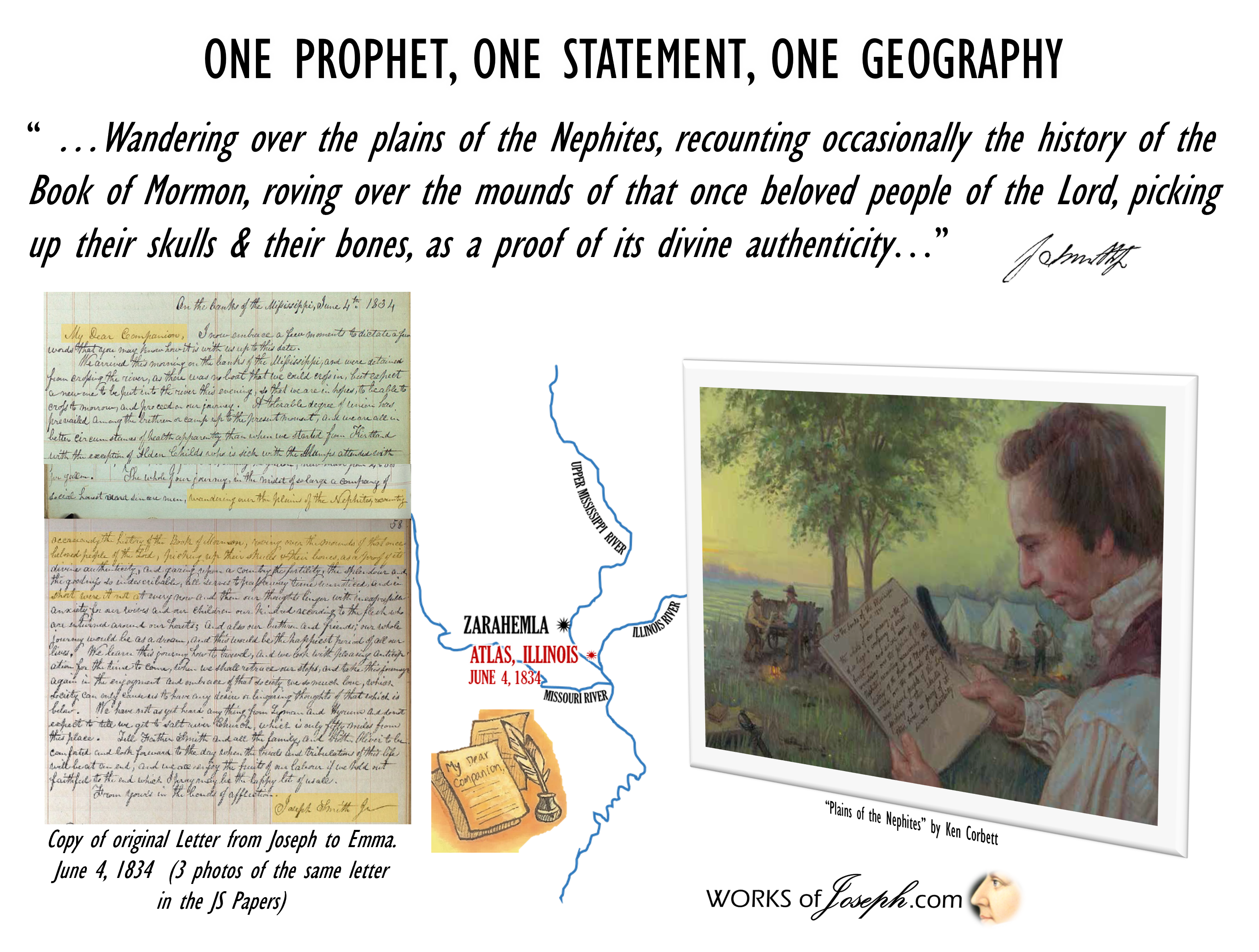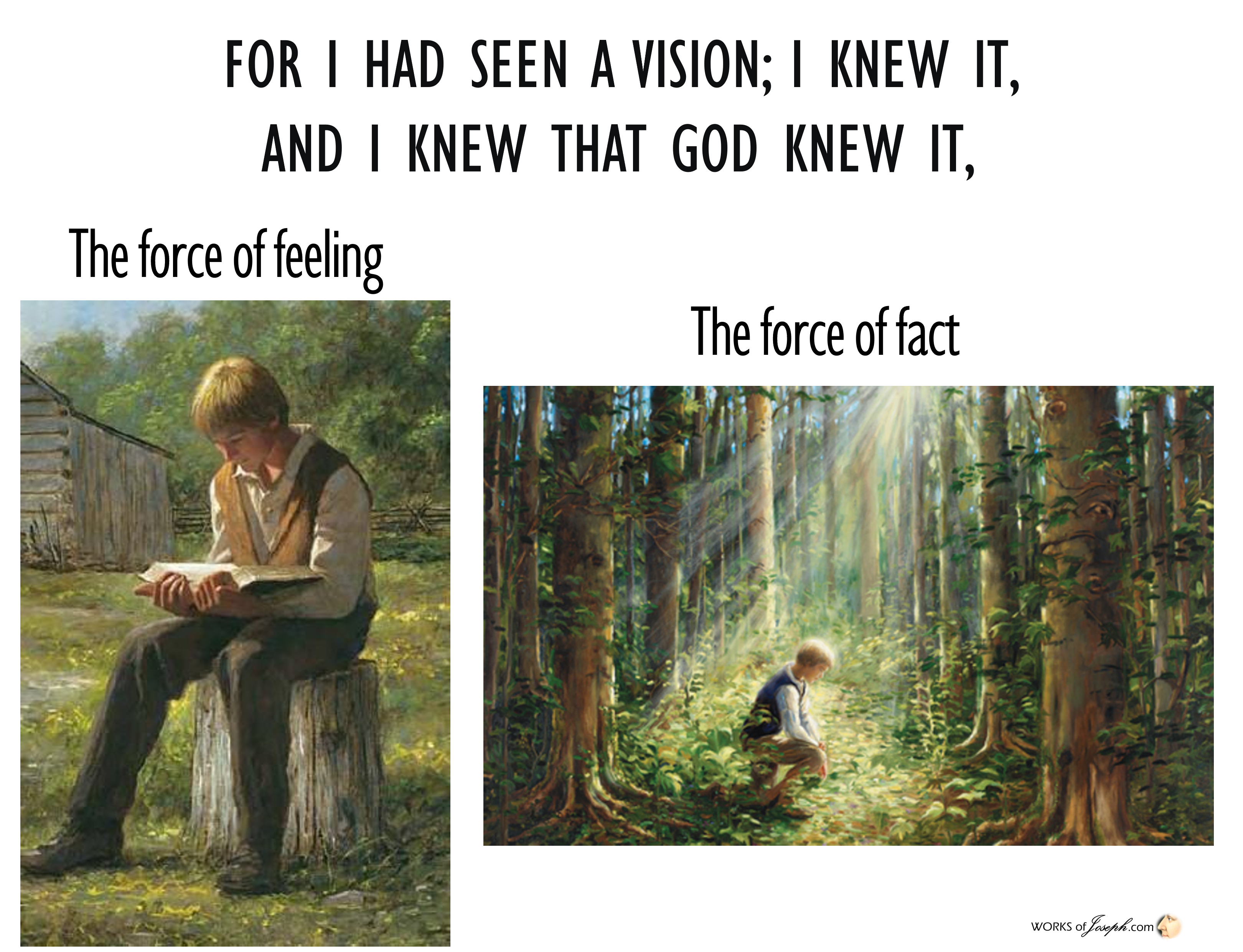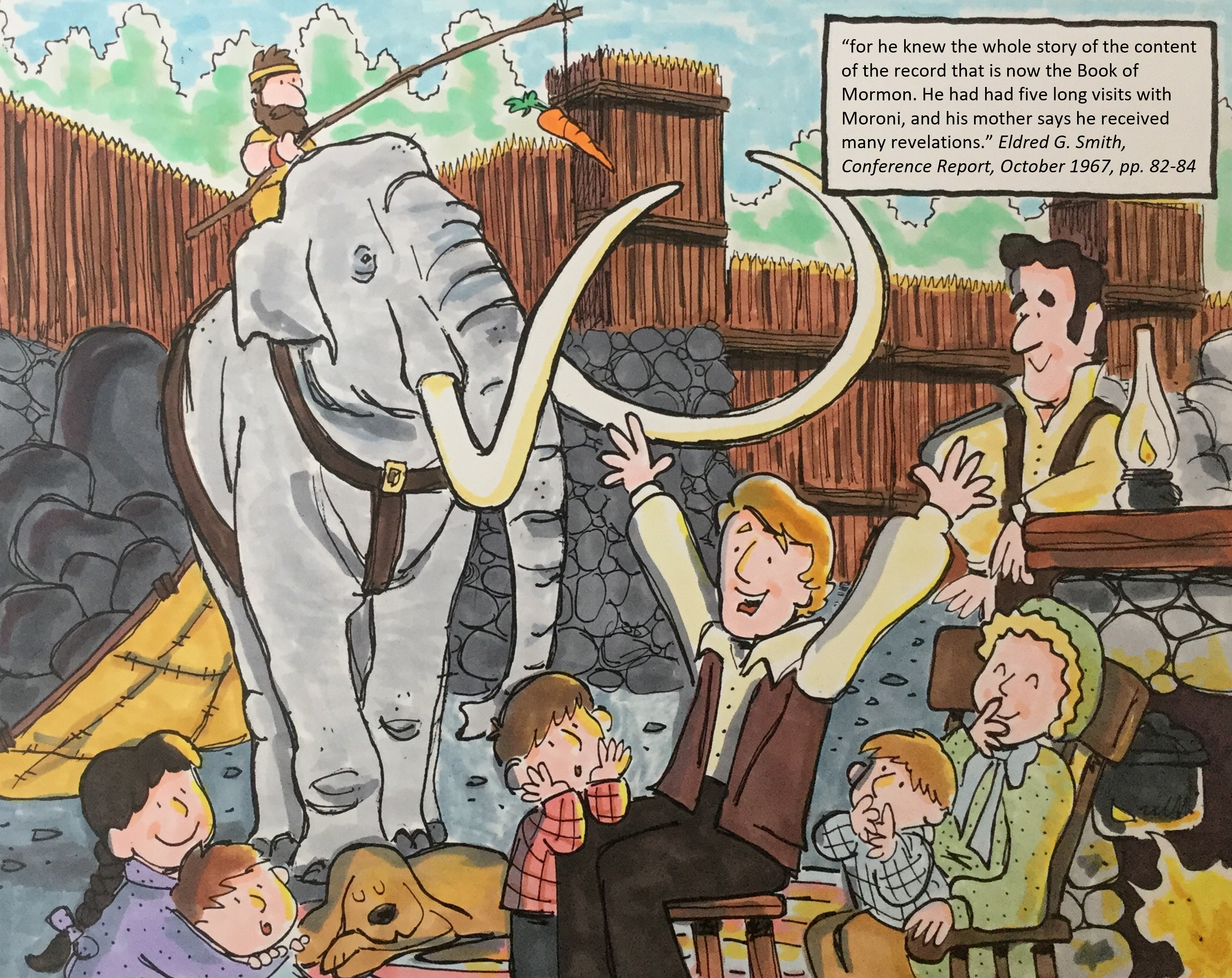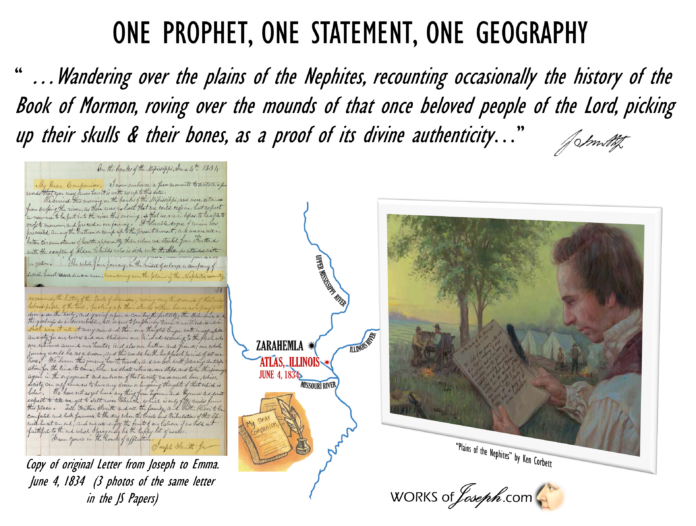In Joseph Smith’s Own Words, “Proof of its Divine Authenticity”
End of Story. North America is the land of the Book of Mormon.
See Joseph Smith Papers Here:

“On the banks of the Mississippi, June 4th. 1834. My Dear Companion, I now embrace a few moments to dictate a few words that you may know how it is with us up to this date. We arrived this morning on the banks of the Mississippi, and were detained from crossing the river, as there was no boat that we could cross in, but expect a new one to be put into the river this evening, so that we are in hopes, to be able to cross tomorrow, and proceed on our journey. A tolerable degree of union has prevailed among the brethren or camp up to the present moment, and we are all in better circumstances of health apparently than when we started from Kirtland… The whole of our journey, in the midst of so large a company of social honest men and sincere men, wandering over the plains of the Nephites, recounting occasionaly the history of the Book of Mormon, roving over the mounds of that once beloved people of the Lord, picking up their skulls & their bones, as a proof of its divine authenticity…” Signed, Joseph Smith Jr. Joseph to Emma, 6.4.1834. Retained copy in handwriting of James Mulholland, Joseph Smith Letterbook 2, pp. 56–58, LDS Church Archives
In this personal love letter to Emma, Joseph says Zion’s Camp traveled on the same plains as those Nephites of the Book of Mormon. Joseph also explains these “once beloved people of the Lord” built these mounds. These are the same lands as the Hopewell Mound Builder Civilization that thrived in the heartland of the United States from 100 BC to 500 AD according to archaeologists and scientists.
What better description from Joseph Smith than “the plains of the Nephites” when speaking about the heartland of North America. Imagine rolling hills, vast prairies, rivers, lakes, streams, majestic meadows, areas of wilderness, pastures, flatlands and timberland, just as spoken of in places of scripture. “…And it came to pass that when they had come to the city of Nephihah, they did pitch their tents in the plains of Nephihah, which is near the city of Nephihah.” Alma 62:18 (see D&C 117:8, Ether 14:15). It seems very unlikely that you could confuse these plains with the jungles of South and Central America.
I Believe Joseph Smith
“Do you who trust and believe Joseph Smith, believe his words when he said to Emma that he was “wandering over the Plains of the Nephites?” Do you trust the fact that Joseph was camped on the Mississippi River near a small landing near the town of Atlas, Illinois? Do you indeed believe Joseph wrote said letter of June 4, 1834 as shown in the Joseph Smith papers? Was Joseph telling Emma the truth? Did he have any reason to be making something up here? Do you really think that Joseph was traveling on the very plains that the Nephites had once walked on, some 2,000 years ago? If he wasn’t why would Joseph say he was walking on those very plains of the Nephites? Was he really roving over the Nephite mounds and was it indeed a proof of the divine authenticity of the Book of Mormon?
Mark Wright a Mesoamerican friend once wrote while trying to downplay Joseph’s letter, “in a letter to his wife Emma dated June 4, 1834, he gave a general account of what they encountered on their excursion:” Does Mark mean generally true or generally false, or he doesn’t know? What did they encounter on their excursion? Bones of real Nephites? Did they really see physical mounds? Did Joseph really say this, “proof of [the Book of Mormon’s] divine authenticity?” Yes, and Yes. So, Joseph spoke a FACT, not a FEELING. Joseph spoke the truth and I believe Joseph, and I know that Joseph knows that the plains of the Nephites in the Book of Mormon are in Ohio, Indiana, and Illinois.
Zion’s Camp brethren said they picked up the bones of ancient Nephites on the plains. From the mound they visited just a day or so earlier, they brought with them some bones of Zelph in their wagon. “Some of his bones were brought into the Camp and the thigh bone which was broken was put into my wagon and I carried it to Missouri.” Wilford Woodruff’s Journal, ed. Scott G. Kenney, 1:10. “We took the leg and thigh bones and carried them along with us to Clay County. All four appeared sound.” Heber C. Kimball, Times and Seasons, 6:788. “…We came to the bones of an extraordinary large person or human being, the thigh bones being 2 inches longer from one Socket to the other than of the Prophet who is upwards of 6 feete high which would have constuted some 8 or 9 feete high.” Moses Martin Diary, LDS Church Archives, spelling not corrected).
“As we look into the record, we find that after the first visit to the Hill Cumorah, Joseph told the story of the history of the early American inhabitants to his family. His mother wrote: “From this time forth, Joseph continued to receive instructions from the Lord, and we continued to get the children together every evening for the purpose of listening while he gave us a relation of the same. I presume our family presented an aspect as singular as any that ever lived upon the face of the earth—all seated in a circle, father, mother, sons and daughters, and giving the most profound attention to a boy, eighteen years of age.” This sounds like the first family home evening of this dispensation.

Then she continued to say: “We were now confirmed in the opinion that God was about to bring to light something upon which we could stay our minds, or that would give us a more perfect knowledge of the plan of salvation and the redemption of the human family. This caused us greatly to rejoice, the sweetest union and happiness pervaded our house, and tranquility reigned in our midst. During our evening conversations, Joseph would occasionally give us some of the most amusing recitals that could be imagined. He would describe the ancient inhabitants of this continent, their dress, mode of traveling, and the animals upon which they rode; their cities, their buildings, with every particular; their mode of warfare; and also their religious worship. This he would do with as much ease, seemingly, as if he had spent his whole life among them.” Lucy Mack Smith, History of Joseph Smith by His Mother, pp. 82-83. This was before he received the plates. He must have received this by revelation, for he knew the whole story of the content of the record that is now the Book of Mormon. He had had five long visits with Moroni, and his mother says he received many revelations.” Eldred G. Smith, Conference Report, October 1967, pp. 82-84
“From the time Father Bosley located near Avon, he found and plowed up axes and irons, and had sufficient to make his mill irons, and had always abundance of iron on hand without purchasing. In the towns of Bloomfield, Victor, Manchester, and in the regions round about, there were hills upon the tops of which were entrenchments and fortifications, and in them were human bones, axes, tomahawks, points of arrows, beads and pipes, which were frequently found; and it was a common occurrence in the country to plow up axes, which I have done many times myself.
I have visited the fortifications on the tops of those hills frequently, and the one near Bloomfield I have crossed hundreds of times, which is on the bluff of Honeyoye River, at the outlet of Honeyoye Lake.
In that region there are many small deep lakes, and in some of them the bottom has never been found. Fish abound in them. The hill Cumorah is a high hill for that country, and had the appearance of a fortification or entrenchment around it. In the State of New York, probably there are hundreds of these fortifications which are now visible, and I have seen them in many other parts of the United States. Readers of the Book of Mormon will remember that in this very region, according to that sacred record, the final battles were fought between the Nephites and Lamanites. At the hill Cumorah, the Nephites made their last stand prior to their utter extermination, A. D., 385. Thus was Heber preaching the Gospel to the Gentiles, above the graves of the ancients of Israel, whose records with the fullness of that Gospel, and the relics of their prowess and civilization, were now whispering from the dust.” Life of Heber C. Kimball by Orson F. Whitney Mounds at Cumorah
Other verses of the Book of Mormon that have “plains of…”:
“The plains of Nephihah.” (Alma 62:18)
“The plains of Heshlon.” (Ether 13:28)
“The plains of Agosh.” (Ether 14:15)






